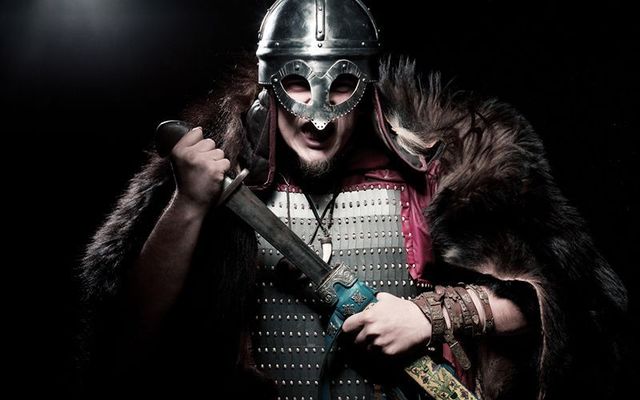Scientists believe that an elite fighting squad within the Vikings, known as the berserkers, imbibed a mind-bending hallucinogen "stinking henbane", making them fearless and vicious. The plan "stinking henbane" would have bee infused with tea or alcohol to make them feel less pain.
Vikings were famous for their Norse skirmishes into neighboring communities, which involved a great deal of looting and pillaging. The Scandinavian tribes arrived in Ireland in 795 AD and remained a presence in Ireland until they were defeated by Brian Boru at the Battle of Clontarf, in 1014.
Among these Viking fighters were "berserkers", an elite squad, who went into battle without traditional armor. It's said that battles ended after their anger subsided. It's now believed that their fearless rampages were due to hallucinogens.
Karsten Fatur, an ethnobotanist at the University of Ljubljana, in Slovenia, told the Sunday Times in 2020: "They could have made tea from it, they could have infused it into alcohol, they could have made an ointment of the plant in animal fat and rubbed it on their skin."
Ethnobotany, Fatur's area of study, is the examination of a region's plants and their practical uses through traditional knowledge. According to Fatur, "stinking henbane" the Vikings' hallucinogen of choice can bring on feelings of delirium, inhibition loss, and manic episodes. It also triggers visual disturbances, hallucinations, drowsiness, and red skin. Fatur pointed out that it is also known to dull pain.
He told the Times: "It would have reduced their sensation of pain and made them wild, unpredictable and highly aggressive.
"There may also have been dissociative effects, such as losing touch with reality. This might have allowed them to kill indiscriminately without moral qualms."
In the past, there have been other theories about the Vikings' fighting abilities, with the use of alcohol of psychedelic mushrooms having been suggested. Fatur agreed that the mushroom could have accounted for their delirium.

Love Irish history? Share your favorite stories with other history buffs in the IrishCentral History Facebook group.
The Vikings in Ireland
Vikings first invaded Ireland in 795 AD and the rest is history. The Vikings from the Scandinavian countries began raiding Ireland just before 800 AD and continued for two centuries before Brian Boru defeated them at the Battle of Clontarf in 1014.
The first recorded Viking raid in Ireland occurred in 795 AD when the church on Lambeg Island in Dublin was plundered and burned. At the time, there were no true towns in Ireland but rather scattered communities near monasteries that served as ‘safe houses’ for valuables, food, and cattle. This made those locations prime targets for Viking raids.
As the Vikings continued their raids on Ireland during the ninth century they established settlements around the country, many of which still survive today. One of the earliest Viking settlements established at the mouth of the Liffey survived to become what is now modern Dublin.
In 914 AD, a fleet of ships established a base at Waterford, followed by a base at Cork. Somewhat later, an invasion along the Shannon estuary laid the foundation for Limerick. Wexford was another stronghold, with the region between Wexford, Waterford, and Kilkenny known as Ireland’s Viking Triangle.
* Originally published in 2020. Updated in Sept 2024.




Comments